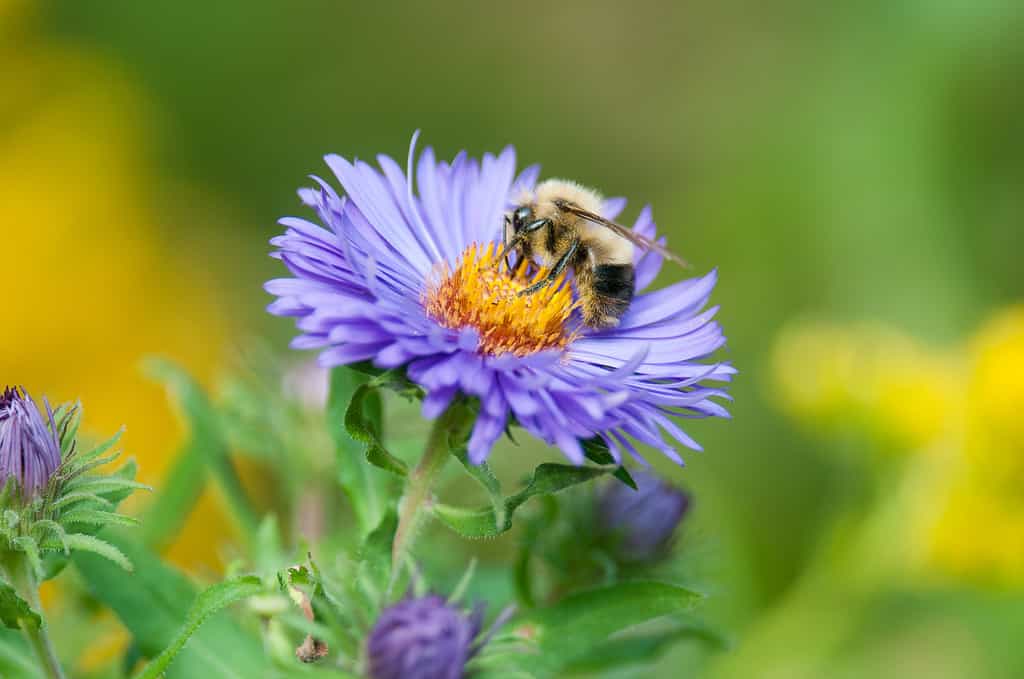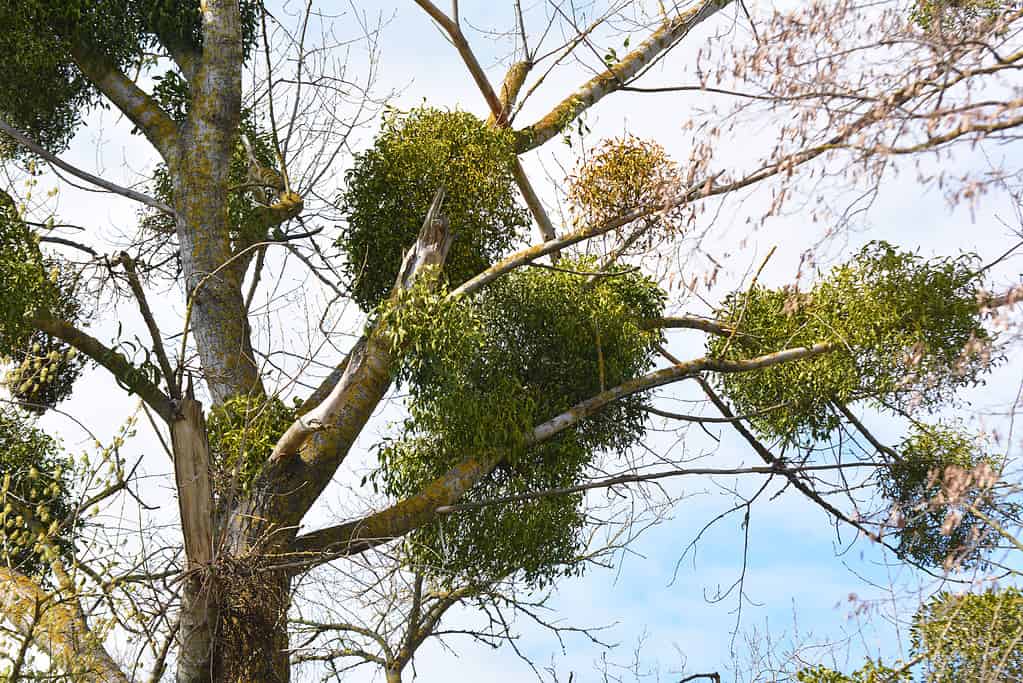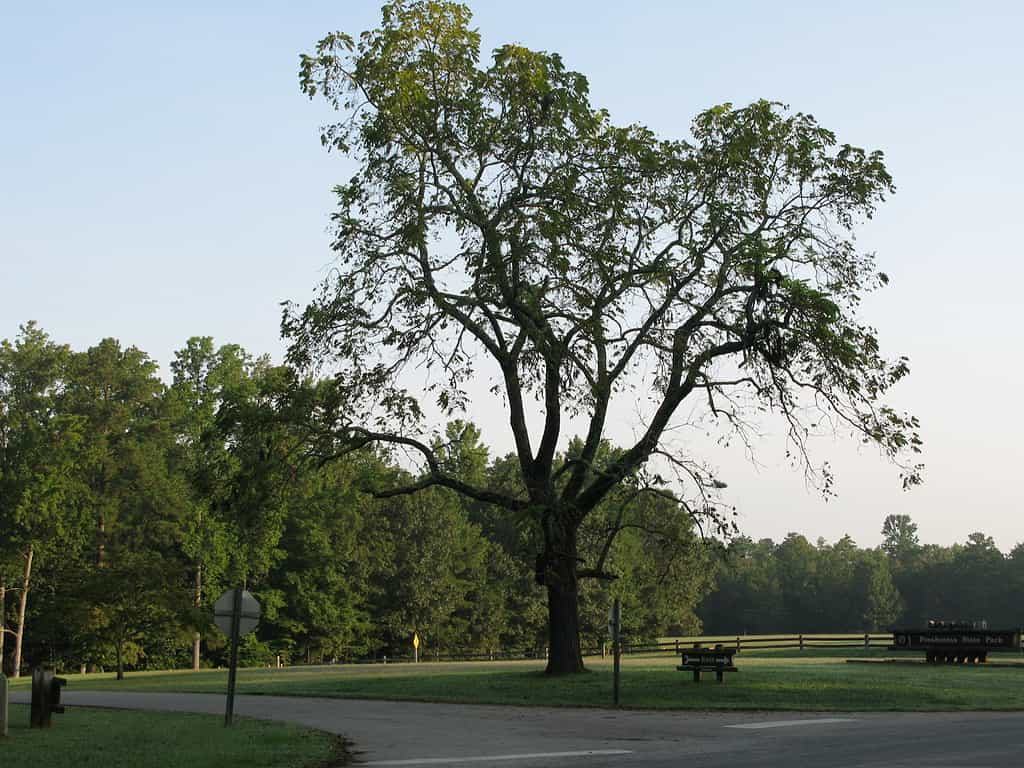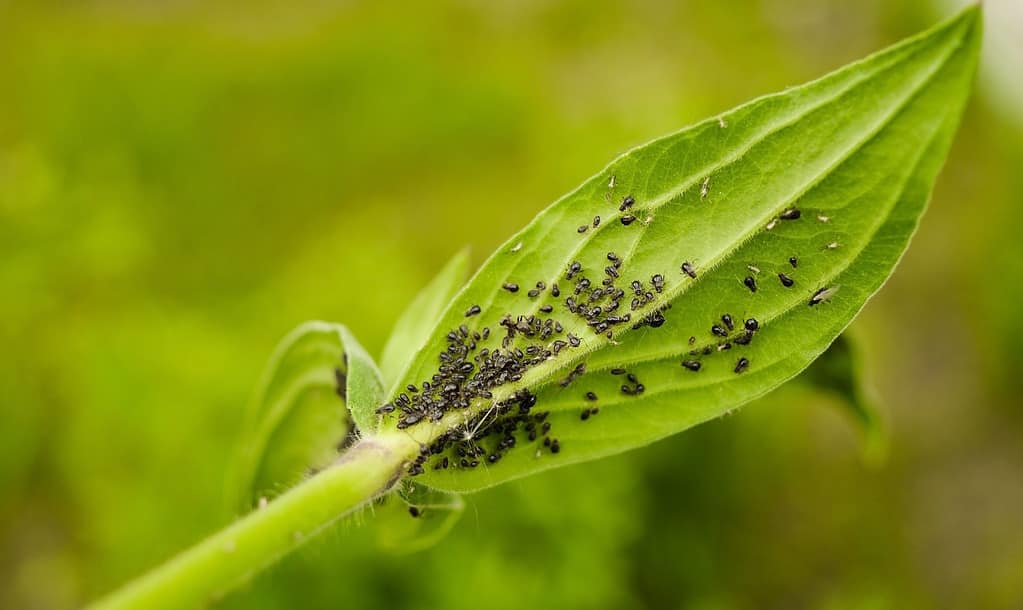The forest is full of symbiotic relationships. No matter what forest we’re discussing, its organisms interact in complex ways. It isn’t just a matter of who eats who. Many organisms also work together in partnerships.
Sometimes, these partnerships are mutually beneficial. Each organism may get something from the other. However, in other cases, only one side may be benefiting.
We’ll discuss all of the symbiotic relationships in the forest and provide examples for each.
Mutualism

Bees and other pollinators are the best examples of mutualism.
©Kyle Reynolds/iStock via Getty Images
Mutualism means that each organism in the partnership is benefiting. It’s good for everybody. However, these relationships are pretty rare in the forest world, though there are a few famous examples.
One is between pollinators and plants. Bees need nectar for their hives. In collecting it, they transfer pollen from flower to flower, which helps the plants reproduce. Plants produce yummy nectar in a higher concentration to attract more pollinators.
Fungi and trees also have an interconnected relationship that’s mutually beneficial. Fungal threads, called mycelium, connect the roots of trees and help the tree collect more nutrients and water from the soil. The fungi can decompose organic matter in the soil and provide these nutrients to the trees.
In exchange, the trees provide the fungi with some sugars that they produce through photosynthesis.
Lichens are another common organism that’s often mistaken for moss. However, lichen lives on rocks and trees – not solely on the forest floor. Lichen isn’t actually one organism, though. Instead, it’s a symbiotic relationship between a fungus and an alga. The fungus provides a structure for the alga to grow on, and the alga performs photosynthesis to fuel the fungus.
Parasitism

Mistletoe is a parasite in nature, taking advantage of its host tree by sapping nutrients and moisture from it.
©Orest Lyzhechka/iStock via Getty Images
You probably know what a parasite is. However, you may not have known that parasitism is actually a symbiotic relationship.
In the forest, one of the most common examples that we can see is mistletoe. These plants are most known for their appearance around Christmas and other winter holidays. However, they are actually a parasite.
Mistletoe has tiny roots called haustoria. These penetrate into the tree and hook up to its vascular system, where water and nutrients are transported. Then, the mistletoe can redirect some of the water and nutrients to itself.
This benefits the mistletoe, of course, but it can cause stunted growth and branch dieback in the tree. Eventually, once the mistletoe spreads enough, the whole tree may die.
However, trees have developed some strategies to defend against this form of parasitism. Some produce chemicals to kill the haustoria or stunt their growth. Others will compartmentalize the infected area, allowing the infected branches to die and starving the mistletoe as a result.
Tapeworms and other internal parasites are also common in the forest. However, we cannot see them usually. These worms take up residence in the intestines of other animals, absorbing their nutrients. These worms aren’t usually directly fatal (as it wouldn’t be very smart to kill your host outright), but they can cause malnutrition and other health problems.
Commensalism

Orchids grow on trees, but they do not sap nutrients from them.
©iStock.com/JillianCain
Commensalism occurs when one organism benefits, but the other is unharmed. This is considered one of the three main types of symbolic relationships. However, it is rarer in a forest setting.
A good example of this is orchids and some vines. These plants cling to the branches and trunks of trees, using them for support. However, they rarely harm the tree itself. They gather moisture and nutrients from the air and rain, not stealing them from the tree like parasite plants would.
Amensalism

Due to their toxicity, very few plants and flowers can grow around black walnut trees.
©Virginia State Parks staff/ CC BY 2.0
This relationship includes one organism harming another, but no one is benefiting from the relationship. Usually, these are “oops” relationships in nature. For instance, a larger tree may cast shade on a smaller tree, hindering its growth. The larger tree isn’t casting shade on purpose and isn’t benefiting from the exchange.
Another example is the black walnut tree. This tree releases a chemical that is toxic to many other types of plants, creating a “dead zone.” This toxin is called “juglone” and is actually most toxic to other walnut trees. It works by limiting other walnut’s ability to photosynthesize and get nutrients from the soil.
The tree doesn’t directly benefit from the chemical, but other plants are harmed by it. Other plants may benefit, though. Certain grasses and wildflowers have developed immunity to this chemical, allowing them to thrive around black walnut trees.
In forests, black walnut trees can create a “microhabitat” of rare grasses and flowers that may have a harder time growing elsewhere.
Phoresis
Phoresis occurs when one organism uses another for transportation, but neither organism is harmed. For instance, a mite may hitch a ride on a beetle’s back. The beetle isn’t harmed, and the mite potentially finds a new food source.
Seeds are another common example. There are many types of seeds that have hooks or barbs that attach to an animal’s fur. These seeds are then carried away from their parent plant, where they are more likely to grow. However, the animal isn’t harmed in this process.
Cleaning Symbiosis

Aphids can be a nightmare for farmers, but ants can make them even
worse.
©iStock.com/Irina Starikova
Cleaning symbiosis is a form of mutualism that involves cleaning. One organism will clean another (usually getting food in the process). The cleaning organism gets food, and the receiver of the cleaning gets cleaned. It’s a win-win.
Clownfish cleaning parasites from larger fish is the classical example of they symbiotic relationship. However, this also occurs in the forest.
One common example is fungi and trees, which we discussed above. Fungi break down dead wood and debris, sometimes off of living trees. They then release nutrients into the soil that benefit nearby trees.
Ants may also visit groups of aphids, which produce a sugary honeydew that ants like. They “clean” this honeydew from the aphids, and the aphids receive some protection from predators. For instance, ladybugs and lacewings love to eat aphids, but ants deter them. The ants may also remove harmful fungal spores from the aphids, resulting in less disease within the group.
However, this relationship can quickly turn exploitive. It isn’t odd for ants to suddenly start eating the aphids. They may also “farm” them for their honeydew, which can also harm the aphid population.
Exploitation

Cuckoo encompasses a range of different species, but many of them lay their eggs in others’ nests.
©ThulungPhoto.com/Shutterstock.com
When symbiotic relationships occur, there are always going to be a few organisms that evolve to take advantage of it. When an organism exploits another, they are not directly harming them. However, they are taking advantage of their behaviors to benefit themselves.
For instance, not all flowers produce nectar, but bees may still visit them. Some species of orchids fall in this category. The bees will pollinate the beautiful flowers but won’t get any nectar out of them.
Other examples are cockoos and other brood parasites. These birds lay their eggs in the nest of a different species. The owner of the nest inevitably ends up raising the young, though how this occurs varies from breed to breed. Sometimes, the two species are too similar for the bird to tell the difference between the imposter and their own children. Other times, the cuckoo will bully the bird into caring for their young.
Orchid bees are another example. These bees are deceived by orchid plants that simulate the scent of female bees. male bees follow the scent into the flower under the false premise of mating. The flower gets pollinated as a result, but the male gets nothing in return.
Symbiosis in the Gut
Just like we have gut flora, many animals in the forest do, too. An animal’s digestive system can be home to a complicated community of microbes. Most microbes are harmless or even beneficial to the animals they live within. This is considered a form of mutualism, as both species often benefit.
Bacteria and termites are the best example of symbiosis in the gut. Termites have specialized bacteria within their digestive systems that help them digest cellulose, the main ingredient in wood. Without this bacteria, the termites wouldn’t be able to eat wood, their main nutrition source.
The photo featured at the top of this post is © Jonathon Mauer/iStock / Getty Images Plus via Getty Images
Thank you for reading! Have some feedback for us? Contact the AZ Animals editorial team.






